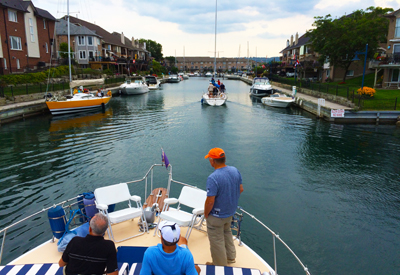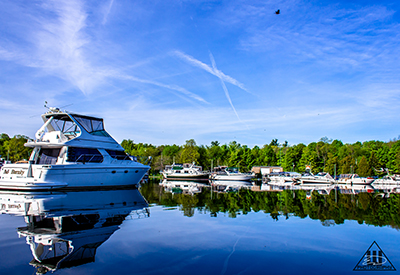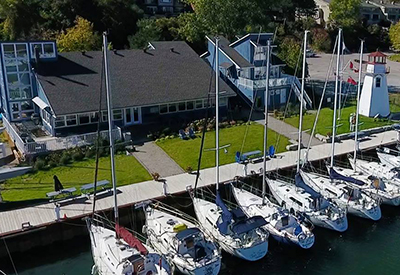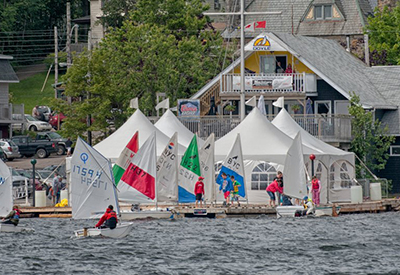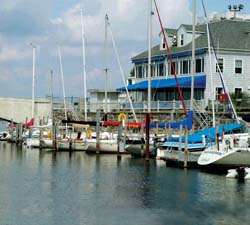Windsor Yacht Club – The Chimo Race
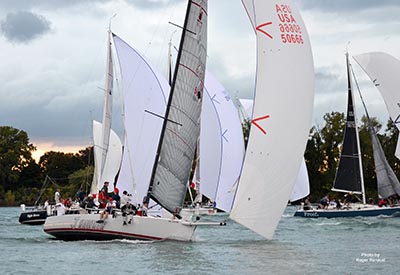
Oct 12, 2017
At 18:45pm October 4th 2017, the first warning signal was fired for the 42nd Annual Chimo Race, hosted by Windsor Yacht Club. The start is located in the Detroit River directly in front of WYC, taking the fleet out into Lake St Clair, around the designated racecourse, then back into the river to finish at the WYC. This is the last race of the season in and around the Windsor/Detroit area.
“The Chimo” is a well attended race with 58 boats participating this year. There are hundreds of people on the patio at WYC, and more lined up along the Canadian shoreline to watch the start of this race. The big boats started first, including Lake St Clair’s J120 fleet. The second start grouped all other spinnaker division boats, followed by the cruising classes/JAM fleet. This year we saw a SW wind funneling through the river at about 10 knots so it was a spinnaker start and a downwind leg right out into the Lake to the first turning mark.

This was the 42nd Annual running of this race. Back in 1975, members Ken Crooks and Cy Lane were having diner talking about starting a fun race to end the season. They then needed a trophy to support their idea. It just so happened, Cy and Beverley Lane just bought themselves a brand new Hughes 29 that year, from the factory in Centralia Ontario, just north west of London. The Hughes Boat Works gave Cy a half model to go along with his new boat, which was there, hanging in the dining room. Cy called his new boat “Chimo”, and offered the half model as the trophy, as long as the race was named after his boat. Hence the Chimo Race. Over the years, the Chimo has grown become an international race, and it has developed into a very popular end-of-season event, open for all clubs of the area to participate. The word Chimo is a greeting from the Inuktitut language of northern Canada.
 As the winds lighten up on the river, the strong current flowing down into river becomes much more apparent, making it impossible at times to sail out of the river toward the lake, where the rest of the racecourse is. When the wind is light, the Race Committee will have to move out into the lake to start the race. Here is the perspective: all the water that is flowing into the Detroit River from Lake St Clair is the basically the same volume of water that flows over the Niagara Falls. On the north side of the starting area is Peche Isle, and on the south side, there are 7 – 8 condos right there on the water, and a depot where gravel is unloaded from ships.
As the winds lighten up on the river, the strong current flowing down into river becomes much more apparent, making it impossible at times to sail out of the river toward the lake, where the rest of the racecourse is. When the wind is light, the Race Committee will have to move out into the lake to start the race. Here is the perspective: all the water that is flowing into the Detroit River from Lake St Clair is the basically the same volume of water that flows over the Niagara Falls. On the north side of the starting area is Peche Isle, and on the south side, there are 7 – 8 condos right there on the water, and a depot where gravel is unloaded from ships.
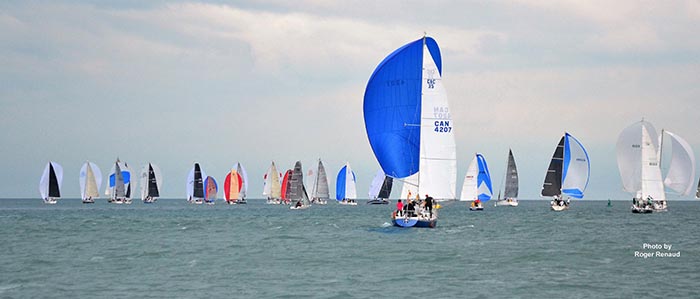
The combination of these many obstructions cause the winds to become somewhat confused in this confined space. Finding that “clean lane” is key to getting out into the lake, and getting a good finish time. The finish line is back into the river, at the WYC. Everyone finishes in the dark.
The start of this year’s race was yet another crowd pleaser. With the J120’s and other bigger boats starting first, those big ASM spinnakers bearing down made an impressive sight. Watching them all leave the river in a group toward the lake is picturesque. George McMahon is the Race Chair, and he also acts as a running commentator for the crowd on the patio. He does a great job!
– Roger Renaud
Photo credits: Roger Renaud

